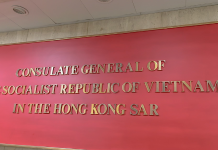Fortunately, according to So’s research, not all movements and images will generate motion sickness. He says that keeping the velocity and amplitude of VR images within a certain set of limits can prevent the likelihood of virtual reality sickness.
Rather than the visuals, So’s largest concern about the development of VR is the lack of 3D audio in a virtual world. He says most virtual reality applications are now quiet. Even if there is sound, it is either in mono or stereo and so he does not perceive it as being real.
“We live in a sensory world. Vision and audio are the most important senses,” So says. “…I think as people get into it (VR), people will start demanding ‘I want to hear that as well’.”

Despite all the challenges faced in the development and popularisation of VR, some companies are making a push they hope will lead to a breakthrough for widespread adoption of the technology. Hong Kong Cyberport describes itself as a digital community trying to blend traditional retail marketing activities with technological elements. Mark Clift, its chief operating officer, says promoting new technologies like VR by holding sports fiestas and installing a model train where customers can don headsets to take a virtual roller coaster does not increase their revenue. However, it does give people exposure to the new technology.
Clift says VR technology is not new; after all it appeared 20 years ago but was quickly forgotten due to the technical constraints. With the market getting excited about VR again, Clift fears the enthusiasm and hopes for VR may turn out to be as misplaced as that for 3D TV years ago. It had been thought 3D technology would change people’s film watching experience in cinemas and on their TVs at home. But the technology failed to meet expectations and became regarded as more a gimmick than an essential part of the viewing experience.
With VR technology now maturing, Clift sees Cyberport’s role as being more of a market enabler and facilitator. He says it is for others to come up with an application that really resonates with the public and allow VR to take off.
“That’s when the tipping point will come,” says Clift. “Will that tipping point be in two or five or eight [years]? I don’t know.”
Edited by: Avery Tsui






































